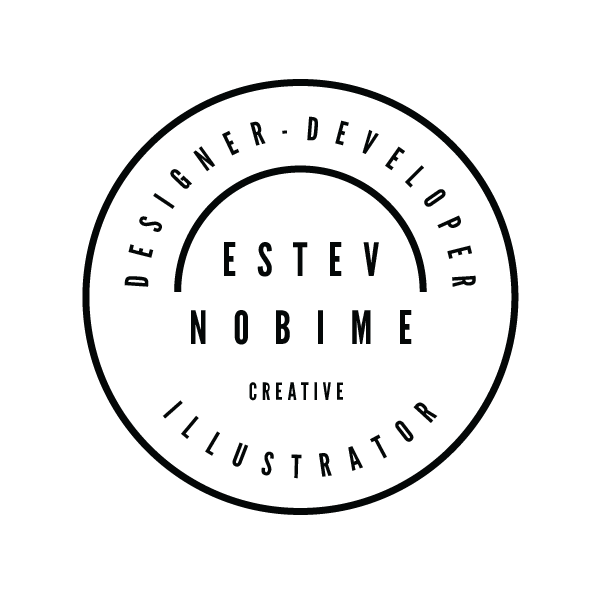1. Introduction
The idea to create the app came from my personal experience as an amateur cyclist. After riding my bike alone for years, I discovered the fun and the camaraderie that riding as a group provided. I decided to look for more groups to ride with in my city but had a hard time finding that information online. The information was scattered on social media groups and websites and not always updated.
The Problem:
Cycling rides in groups are not easy to find online. They are found within a niched biking community and not advertised enough. The main way to find them is through word of mouth or social media. Sometimes you have to research and get acquainted to people in the local cycling community before hoping to join rides.
Another way to find groups is by travelling to bike shops and asking about them. They are advertised on flyers pinned on a board at the shop or sometimes on their website or social media page. The information is not easy to locate and not always updated.
Sometimes a thorough research is needed to find more groups on social media as groups will follow each other and sometimes advertise each other's events.
There are hardly any apps that exist for the sole purpose of displaying cycling groups per cities
The Solution:
An App where people are able to easily search and find online group rides in their area.
2. Design Process
3. Research
Market research - interviews
I went to biking communities and asked many questions. I interviewed cyclists to find out why they ride as a group, how often they did it, how they received communication and updates, what type of rides they enjoyed the best etc... Most of the information I gathered was trough voice recording. I also asked question and initiated discussion on biking forums online.
I interviewed cyclists from different backgrounds and tried to find how the app could help resolve problems they had around finding a group to ride with.
My conclusion from these interactions were that :
I could confirm that searching for group rides is hard and that my experience looking for them was similar for everybody else. I also confirmed that an app to fix the issue will benefit the community
People ride in groups for :
fun, accountability on work out goals, as a way to connect or make new friends over shared interest , as a way to increase visibility for a safer ride.
One of my assumptions was that cycling in a group was safer but my research and interviews proved me otherwise. Even though riding in groups increases visibility in front of automobilists, it actually decreases it for the cyclists as potholes and bumps are less visible. Falls and accidents are frequent when there is no proper signaling of such traps. Proper riding etiquette should be instructed by the group leader before the ride to avoid casualties. When there are great leaders at the front, casualties are rare.
4. Personas
May
May got into indoor cycling lately and has found a new interest for spinning wheels as a form of exercise. She wants to try outdoor cycling.. May is a social person and enjoy the group experience she gets indoors. She knows a lot of people and usually get into activities on her friends recommendation but very few of them are into biking. May looks for bike events on her phone and tries to get one of her friends to join her for a ride during the weekend. She follows a page that updates on summer outdoors activity in her city and checks for update every week. May also lives by a bike path that stretches a couple of miles. She occasionally goes to a bike shop near the path to find cycling groups. She also looks online for groups that occasionally gather on the bike path to ride. She usually googles “local bike rides” or “group rides in the city” but cant easily find the type of ride that fit her pace. May enjoys slow casual rides. The rides she finds are usually too fast.
Stuart
Stuart is an active 27 years old. He works at a local grocery shop and rides his bike any chance he gets. His bike is his most valuable property and he uses it daily on his commute. Stuart likes to hang out with people his age and will look for group rides to join after work. He enjoys the casual rides that stretch about 12 miles in the city and finish at a pub for socializing. Stuart is a social media enthusiast. He follows several local groups on Instagram that bike in his city. Since he is always on social media, he rarely misses updates on rides and has a pretty good knowledge of the rides that are happening in the city. Stuart doesn’t stick to a day or group to ride regularly, because his job schedules him randomly every week. He likes to hop on whichever group that has rides on any given day. He gets on Instagram and Facebook and scroll through the different feeds he find. He Sees the different times rides are happening and figure out which ones to join. From the relationship, he creates riding with different groups he will sometimes reach out to a group leader or a regular and ask them directly about riding.
Romario
Rom is an employee at an IT company. He is trying to fit a regular workout regime into his busy schedule. He has a high performing bike along with gears and looks for intensive bike rides in the city. Rom looks for rides that he can do right after he gets off from work at 5pm or longer rides during the weekend. He starts researching all of his post work activities from his office and his tool of choice is his computer. He likes to use a bigger screen to surf the internet. Rom looks for rides online that are longer and are geared towards amateur training for competitive races. He is looking not only to get in shape but also to participate in cycling marathons. When Rom travels a lot for pleasure. He likes to take his bike to the travel destination with him whenever possible to explore new trails. When Rom looks for additional rides to complement his regular weekend ride, he uses google and type keywords like “fast pace bike rides” . He also follows some groups on social media but doesn’t often use these apps.
5.Problems solving
Problems encountered
The most consistent problems I encountered were related to translating Cyclist culture and jargon into a digital interface. I had to rethink the standard tools that I use with everyday applications and transform them to something that will make sense to a cyclist.
For example instead of a standard meeting time, cyclist gives two times: one to meet at the say location, the other to roll out, in an effort to give enough time to the people coming late. I included both times and put both on the same line so that people new to cycling understand intuitively that the two times are related
One other example was the Jargon. Some rides are no drop, which means that nobody is left behind. Getting on the road is translated as rolling out. I used the proper jargon on the different tools and included a documentation page that not only translates the expressions but also gives suggestions to newbies on how to safely manage a group and organize the rides.
I initially went for a bar where the rider could choose from Easy , Amateur and Advanced rides but I figured it would make more sense to give the user more options. I added drop down list where they are able to choose 3 ranges for pace and distance. With indicators on whether they are respectively considered slow , medium , fast ; short , average or long.
The rest of my time was spent thinking about how to group different settings, buttons and bars logically next to each other so that the user can have an easier time tweaking them.
The following link shows the different steps I had to implement on the app according to a timeline. These steps translate some of the solutions I came up with.
6. User flow
7.Prototype
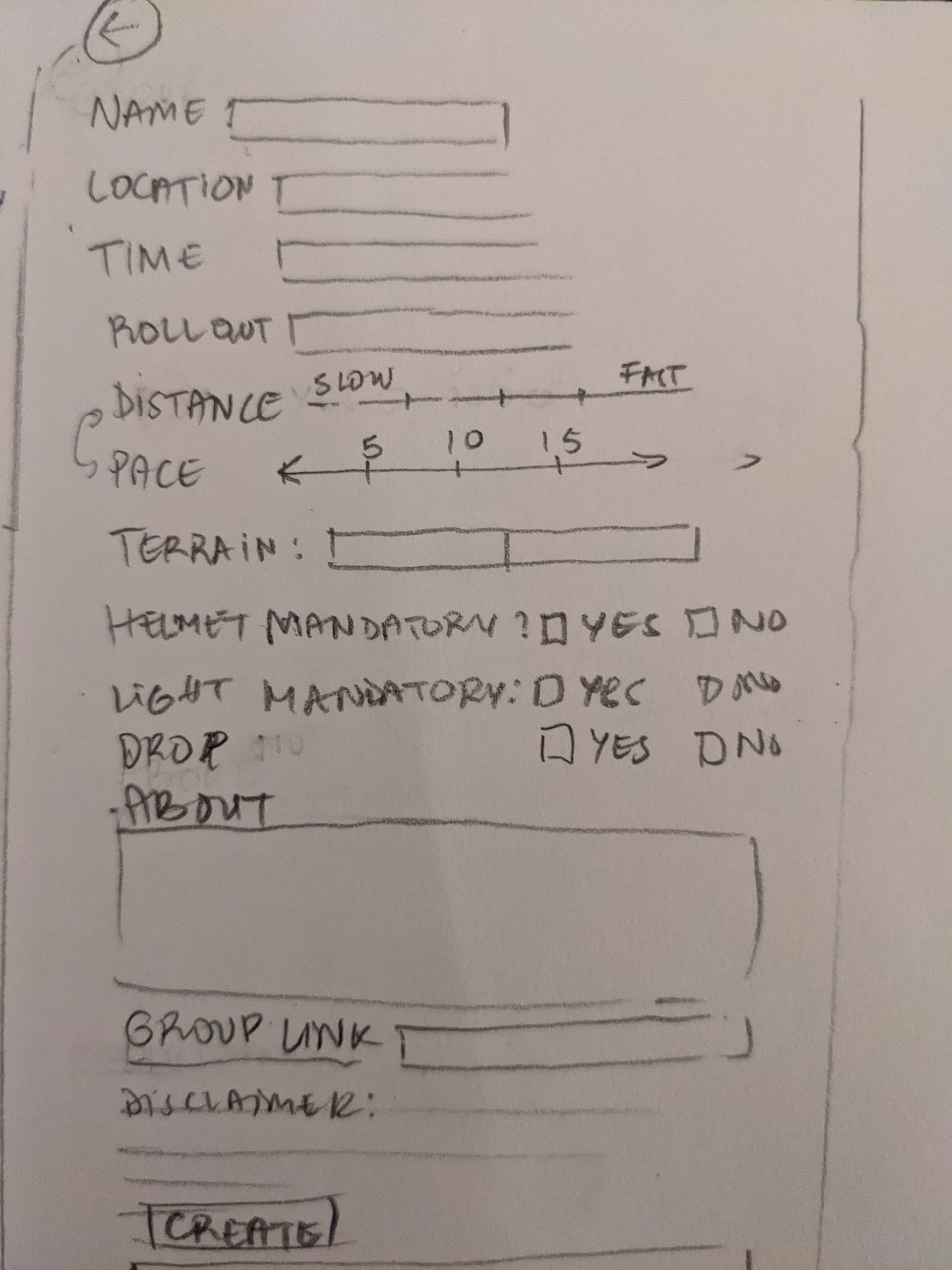
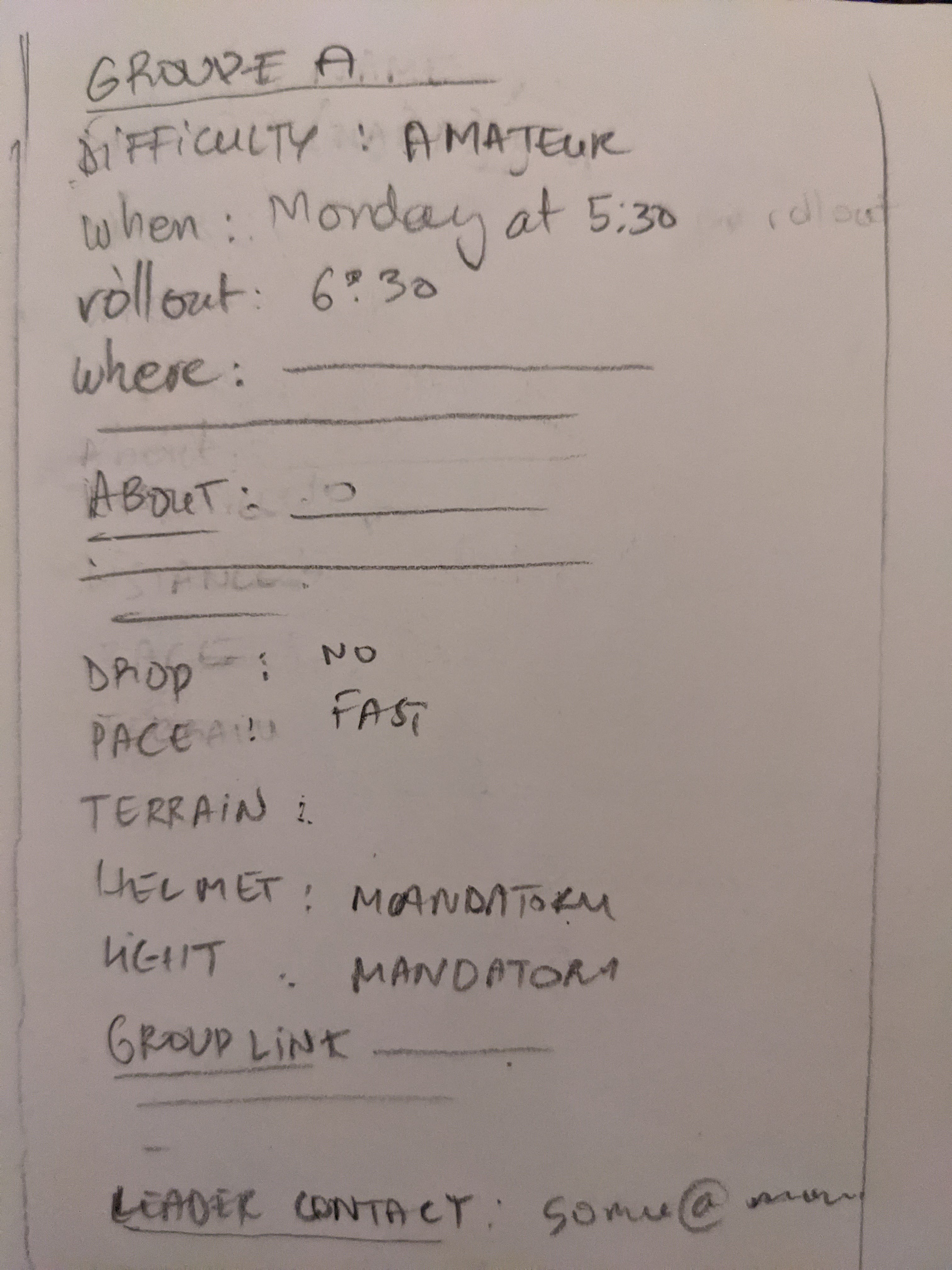
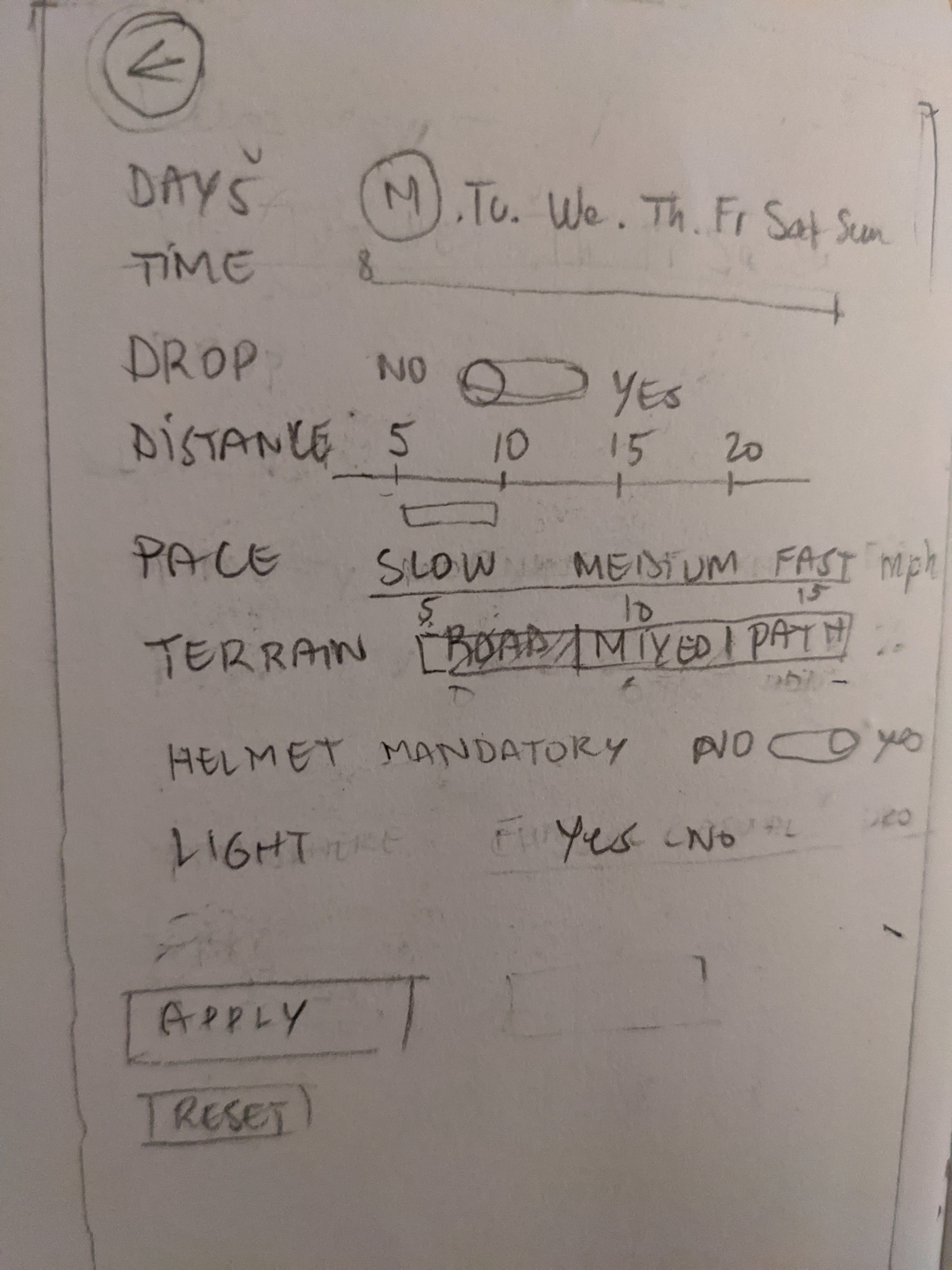
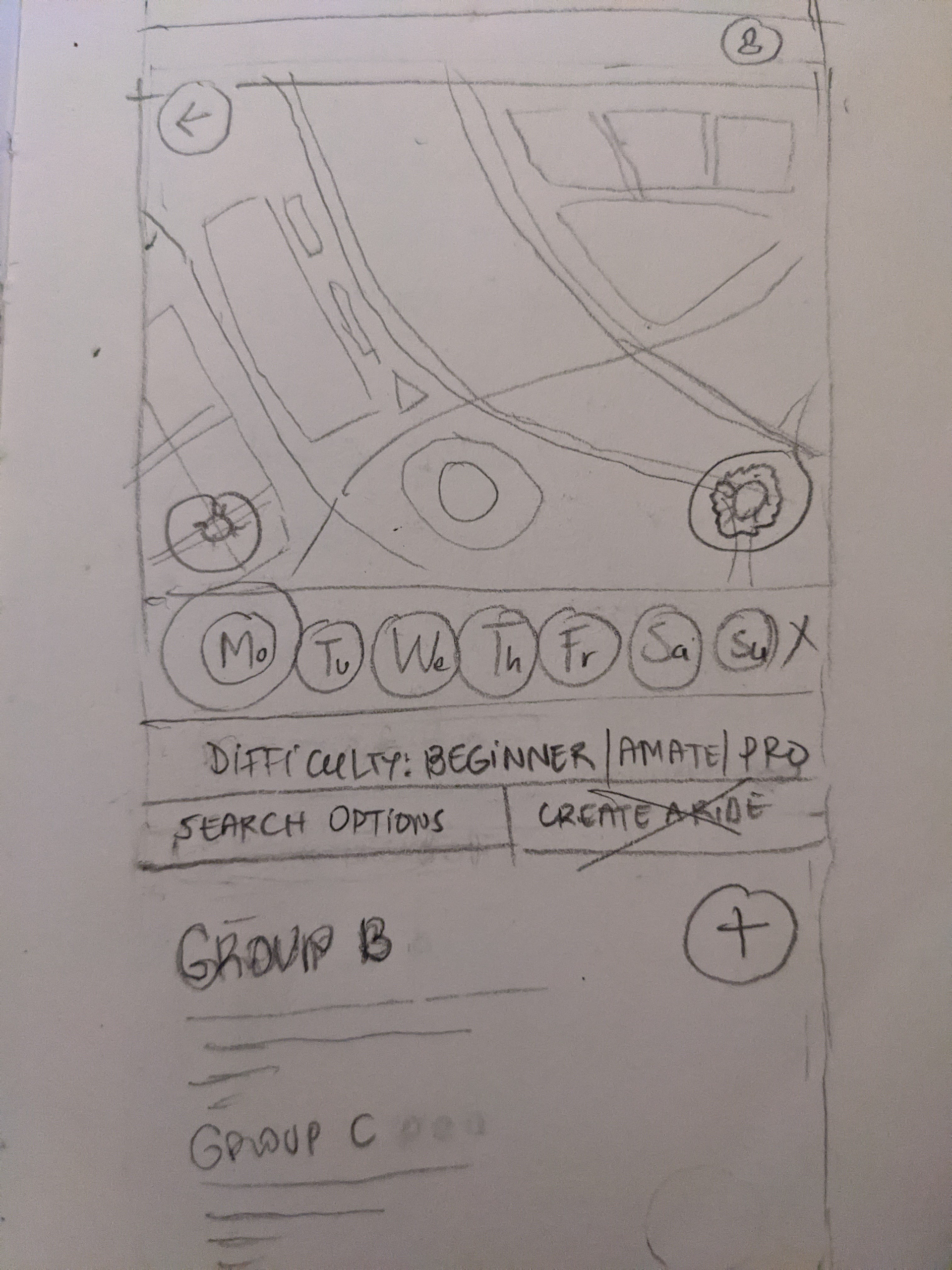

8. Final Product
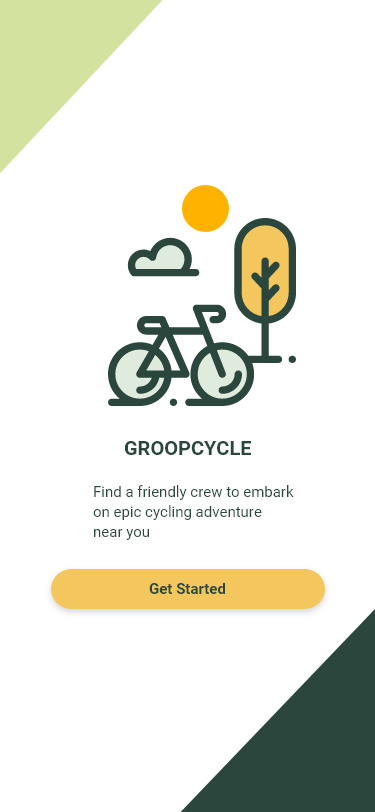
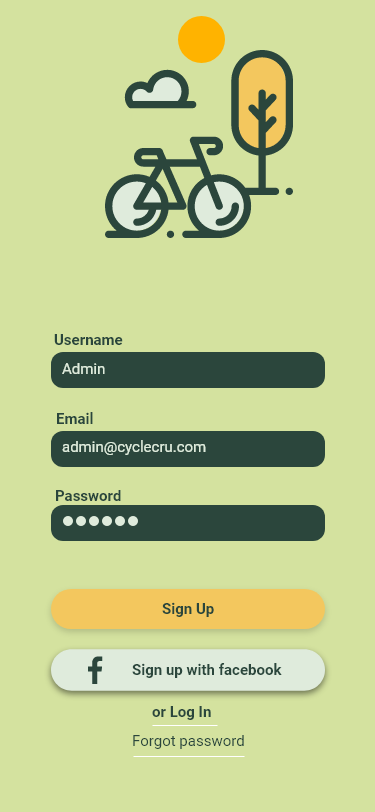

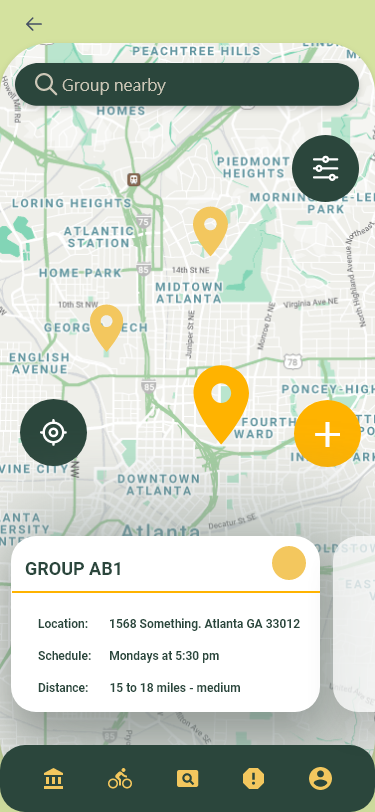
Use the link below to test the app
